For centuries, poets, scholars and theologians have come for a trans-city trading post home Chingatti for more than a dozen libraries for homes with thousands of manuscripts.
But it is now standing on the verge of oblivion.
Shifting sands covered the 8th core of the ancient city for a long time and are encroaching on the neighborhood on its current edge.
The resident says that the desert is their fate. As the climate of the world gets warm and dried, the sandstorm is more often accumulating the tibba centimeters on the streets of Chingetti and people’s homes, some are completely sinking. Tree-planting projects are trying to keep the attackers in the Gulf, but so far, they have not reduced deep root concerns about the future.
Chingetti is one of the four UNESCO World Heritage Sites in Mauritania, one west African nation, where only 0.5% of the land is considered cultivable. In Africa – the continent that contributes the least to fossil fuel emissions – only Somalia and Estini have experienced more climate change effects according to World Bank data.
Mauritanian believes that Chingetti is one of the holiest cities of Islam. Its dried stone and earthen mortar houses, mosques and libraries store some of the oldest Quranic texts and manuscripts in West Africa, which include subjects ranging from law to mathematics.
Community leaders torture the history contained within the walls of the melanin medl Veli. It is like seeing a natural disaster in slow speed, he said. “This is a city surrounded by an ocean of sand, moving forward every minute,” said the Chairman of the Local Association for Participatory Oasis Management. “There are places that I now remember that when I was a child, I used to beg the roofs of the house.”
He remembers that once the palms used to make enough sand roofs were blown into heejorhood to cover, inadvertently walking through the neighborhood from the camel to some time living in the living room Was drowned.
Research shows that sand migration plays an important role in desertation. The deserts including Sahara are expanding at unprecedented rates and “sea of sand” are being reactivated, with blowing the tibba landscape where the vegetation was once standing.
For the Earth scientist of King’s College London, Andreas Bass said, “We used to think as the worst situation five to 10 years ago. The way they are blowing the sand are changing.
According to the United Nations report of 2024, more than three -fourth of the earth’s land has dried up in recent decades. Dryness has given plants, humans and animals the ability to survive. It robs the land of moisture required to maintain life, kills crops and can cause sandstorms and wildfires.
The United Nations report states, “Human-causing climate change is a criminal; it is known to heat the planet, it is drying more and more land.” “Lack of enmity related to enmity is causing illness and death and is increasing forcibly migration worldwide.”
Scientists and policy makers are mostly concerned about the humiliation of soil in the Once-Operium region that are gradually becoming barren land, rather than that there are depots in the Sahara Desert.
Nevertheless, in Chingetti, a changing climate is starting many consequences that the authorities have warned. The trees are scorching, the wells are drought and the livelihood is disappearing.
Date farmers like 50 -year -old Salima Old Salem have found it difficult to nourish their palm trees, and now pipes in water from tanks and proceed more well to do surgeons efficiently.
Salem’s neighborhood was filled with families, but they have gone slowly. Sand now blocks the door of its house. It is buried to those where some of their neighbors lived once. And decades ago, a nearby guesthouse manufactured by an investor from Belgium is now half-incomplete in a waved copper.
Although many people have left, Salem remains, it is known that every time a member of the community leaves, their house cannot work as a bat for a long time and the rest of the community is therefore swallowing bombs by the desert Is more likely to. Salem said, “We like to live here. If I leave, my place disappears.”
Acacia, gum and palm trees once molded the neighborhood with an encroachment tibba, but they have gradually disappeared. The trees have died of thirst or the bee has cut the bee with the need of a residential firewood or a leafy group to feed its herds.
Sandstorms are not new, but have been rapid infiltration, except in the neighborhood on the edge of each city, said retired teacher Mohammad Lamin Bahn. Residents use mules and trains to remove sand because the old city roads are very narrow to adjust cars or bulldozers. When the sand is quite high, some create new walls with existing structures.
“When you remove the vegetation, it gives the tibba a chance to become more active, go, eventually the vegetation that can catch the sand, so it does not blow too much,” the sister said.
Bahin has measured sand deposits and rain for years and says that in the last decade, Chingetty has received an annual average of 2.5 cm of rainfall. As it rains, trees die, and more sand migrates to the city. And the small acacia trees are immersed in the sand, some herds resorted to cutting the date palm trees to feed their herds, disrupting the economy of ecosystem and date cultivation.
The sand is therefore raising public health concerns for the breathing community in dust, Bahne said. The solution, they believe that, both in the neighborhood and with the circumference of the city will have to plant more trees.
The search “Green Belt” has been introduced in cities such as the “Great Green Wall” of Africa on a continent-wide scale, as well as Chengatti. Mauritania’s Ministry of Environment and Ministry of Agriculture, as well as European-funded NGOs, swims projects to float projects to plant trees from the upcoming desert to the city’s libraries and manuscripts.
Although some have repeated the bee, there is little indication that it has made a contradiction to stop the desert in its tracks. To reach ground water, it may take many years for the toppers to grow deep into the Earth.
Community leader El Valley said, “We are convinced that the desert is our fate. But thanks, people still assured that it can be opposed.”


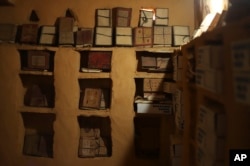
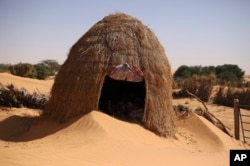
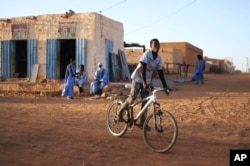
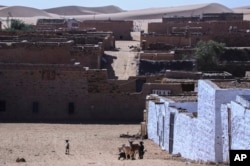
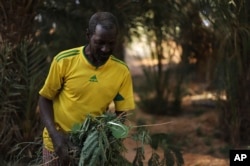


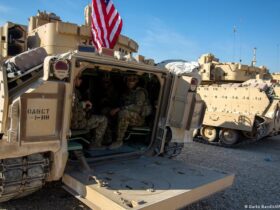

Leave a Reply